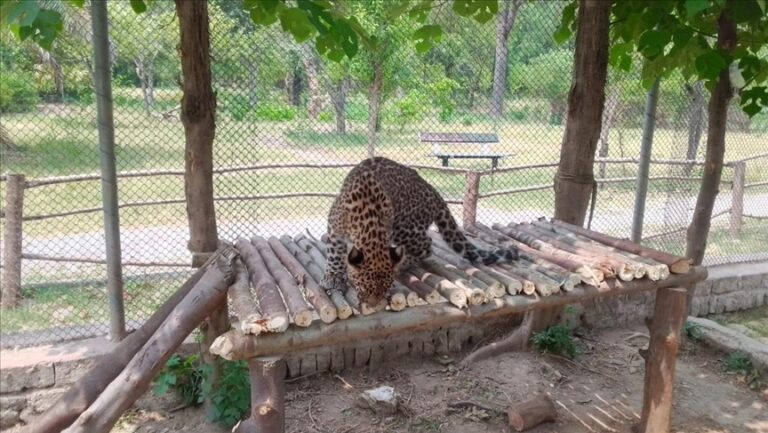– Conservationists have criticised the lack of data on the leopard population, which is estimated at several hundred.
Islamabad
Conservationists have warned that Pakistan’s leopard population, already on the brink of extinction, faces a range of threats, including increasing encounters with humans, declining forest cover and illegal hunting.
Rab Nawaz, a senior official at WWF Pakistan, said that although there were signs of an increase in the population, especially in designated protected areas, there was a serious risk of the animal becoming completely wiped out from Pakistan.
Pakistan has only a handful of leopard reserves, including Margalla Hills National Park in the capital Islamabad, Ayubia National Park in the northwestern province of Khyber Pakhtunkhwa (KP), and Machiara National Park in Pakistan-held Kashmir.
Nawaz said Pakistan’s leopard population is currently estimated to be in the hundreds, although no comprehensive surveys have been done to determine the exact numbers.
The largest number is believed to be in KP province, followed by Kashmir and the northeastern state of Punjab.
Wildlife expert and chairperson of the Islamabad Wildlife Management Board (IWMB), Rina Saeed, echoed a similar view, denouncing the lack of concrete data on leopard populations.
“We have no idea whether the leopard population has increased or decreased,” she told Anadolu Agency.
A camera trap survey conducted by IWMB in Margalla Hills National Park in 2021 spotted at least eight leopards within the protected area.
She said she estimates there are at least 12 in the park.
“Leopards in Margalla Hills National Park are better protected than in other parts of Pakistan because there is very heavy patrols, and we tell villagers that leopards are protected by law and it is a criminal offence to harm them,” she said.
The IWMB has also transformed the Islamabad Zoo, once notorious for animal cruelty, into a wildlife rescue and rehabilitation centre.
Among the roughly 270 animals rescued at the center are three leopards, one of which is due to be released back into the wild soon.
Main threats
Saeed said the most immediate dangers to Pakistan’s leopard population were habitat loss, poaching and hunting, and deadly encounters with humans.
Conflicts between leopards and humans are on the rise as human settlements expand into forest areas, she explained.
Leopards prey on livestock and people kill the endangered big cats in retaliation, she said.
The most recent similar incident occurred last month in Dera Bugti district of southwestern Balochistan province.
Villagers recorded the act and posted the video on social media, sparking backlash from conservationists and wildlife lovers.
However, no action was taken against those involved.
Nawaz of WWF Pakistan pointed out the dilemma in such cases: “When big cats attack livestock, especially in enclosed areas, they kill all the animals. This means loss of livelihoods for people in poor communities. With no insurance scheme to cover such losses, people have no choice but to eliminate the threat before it kills more livestock.”
Another problem, he said, is that young leopards sometimes stray outside the reserve and go near villages where people there, out of fear, end up injuring or killing them.
Nawaz said authorities had taken action in some cases but many more would “probably go unreported” and only come to light when it was too late.
“As urban and rural areas expand, wild animals are forced to move from one area to another, making them more vulnerable to harm from humans,” he said.
“They need large areas of forest to feed and breed, and that’s being taken away.”
He stressed that a decline in leopard numbers has implications for everyone as leopards are very important animals for maintaining the balance of the ecosystem.
“They keep the wild goat population in check, thereby reducing the chances of disease outbreaks and overgrazing of pastures,” Nawaz explained.
“Leopards are apex predators at the top of the food chain and without them the whole food chain will be affected.”
Anadolu Agency’s website only displays in summary form some of the news articles made available to subscribers on its AA News Broadcasting System (HAS). Contact us to learn about subscription options.

